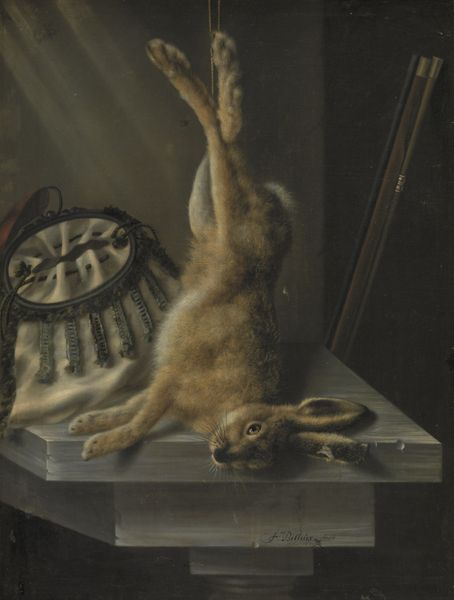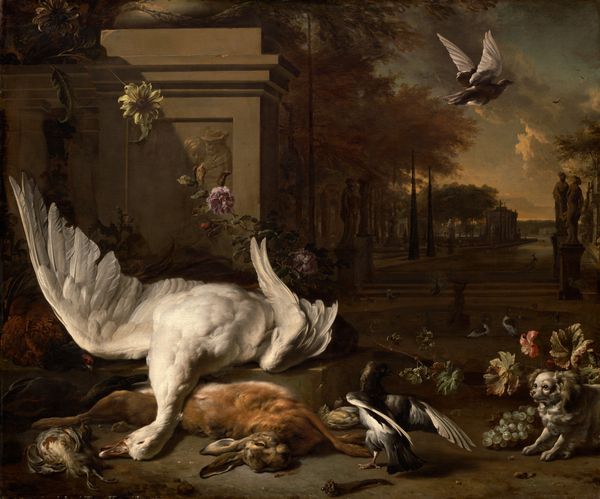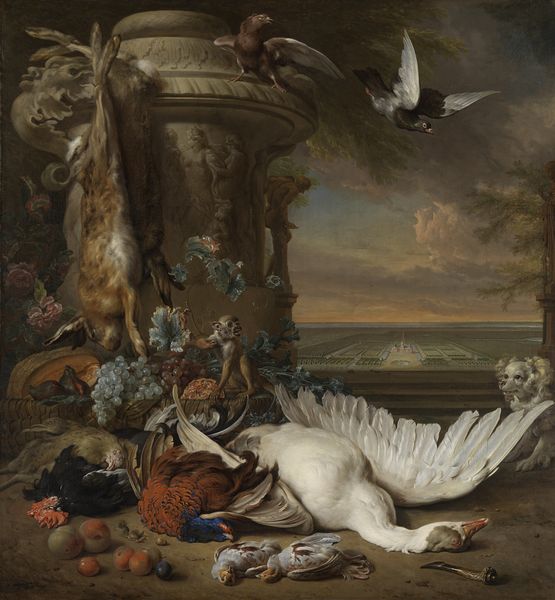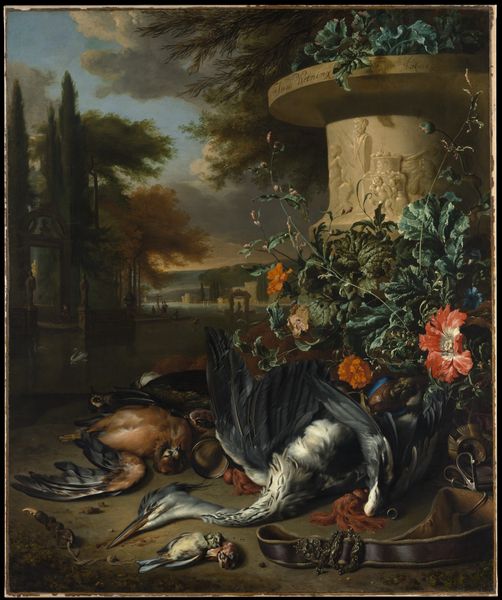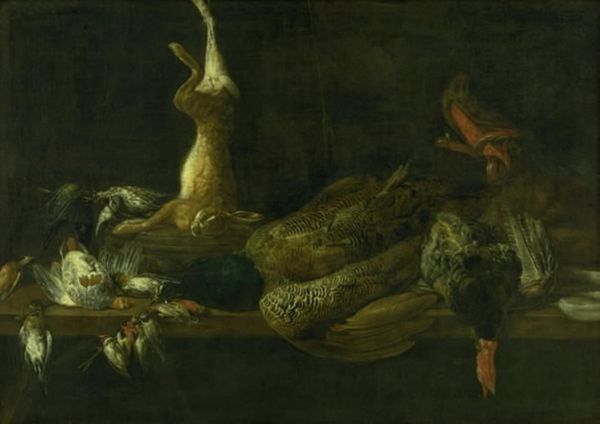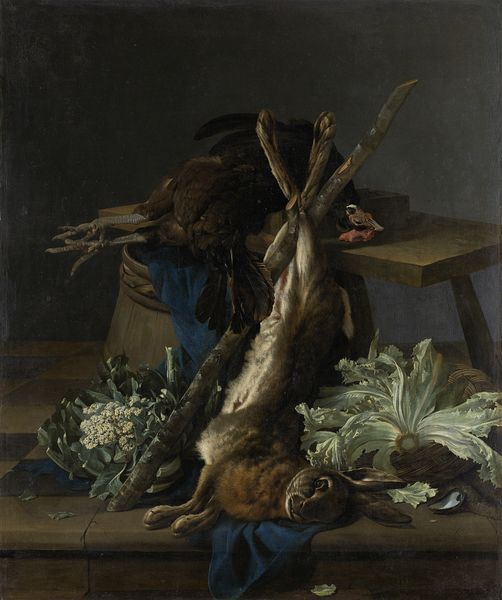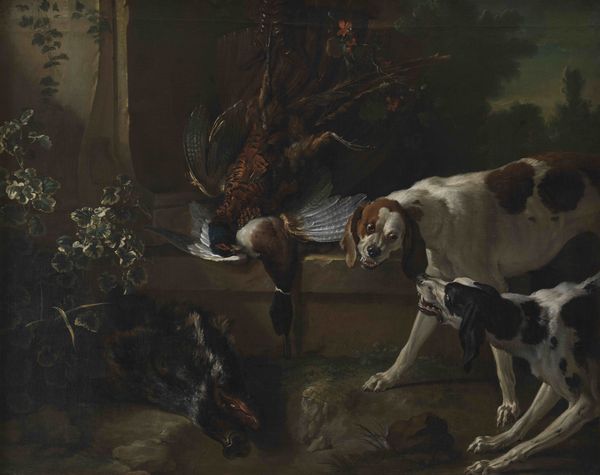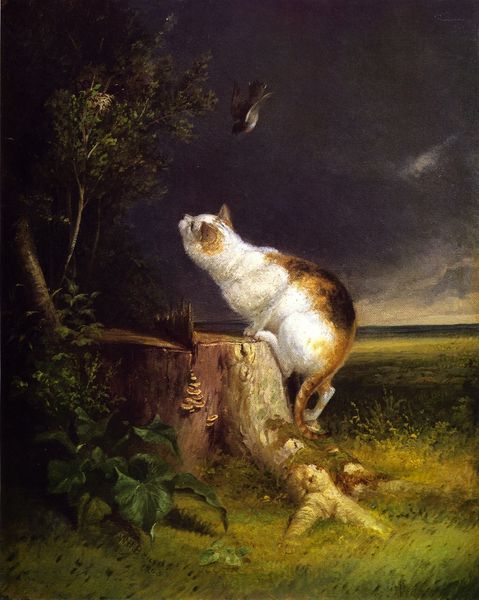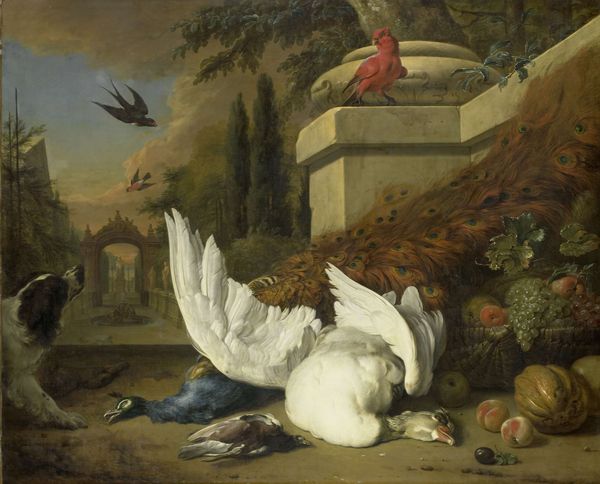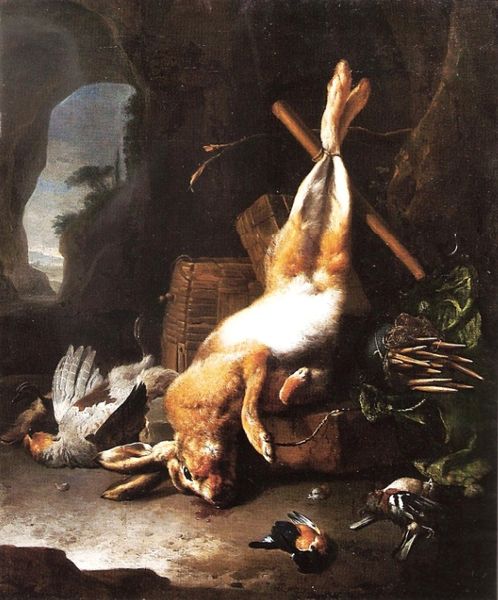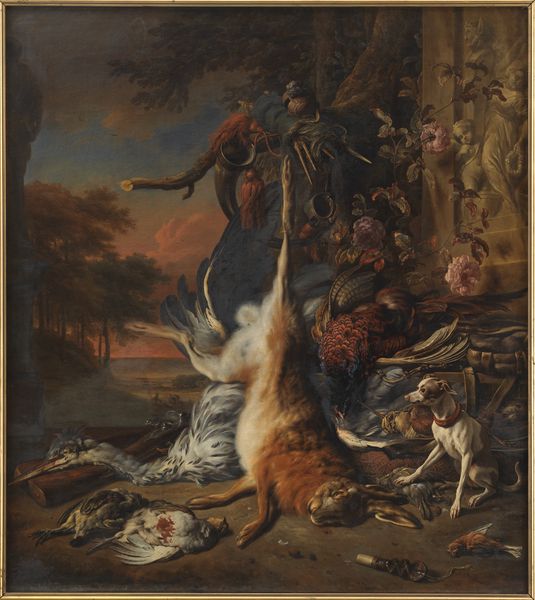
#
dark place
#
fantasy art
#
possibly oil pastel
#
grungy
#
derelict
#
dark-toned
#
underpainting
#
charcoal
#
mixed media
#
watercolor
Dimensions: height 114.5 cm, width 96 cm
Copyright: Rijks Museum: Open Domain
Jan Weenix painted this still life with oil on canvas in the Dutch Republic during the 17th or early 18th century. The display of dead game animals was popular among the Dutch elite, signifying wealth and power. These images reflected the importance of hunting as a pastime and a symbol of social status, in a society where access to land and resources was increasingly concentrated. The arrangement of the animals, with the hare prominently displayed, is not accidental; it speaks to a structured social hierarchy. Even the setting, an idealized outdoor scene, invokes the control and order that the wealthy sought to impose on the natural world. To understand Weenix's work fully, we can consult period hunting manuals and social histories of the Dutch Republic. This helps us reveal the complex interplay of social, economic, and cultural forces that shaped the meaning of art in its time.
Comments
rijksmuseum about 2 years ago
⋮
Weenix set this luxurious game still life in the park of a country estate. He rendered the soft fur of the hare and the stiff wings of the partridge with his finest brushes. At the right are a hunting horn and a bag. Weenix created the structure of the moss in the foreground by covering the wet paint with wood or paper, which he then immediately removed.
Join the conversation
Join millions of artists and users on Artera today and experience the ultimate creative platform.

